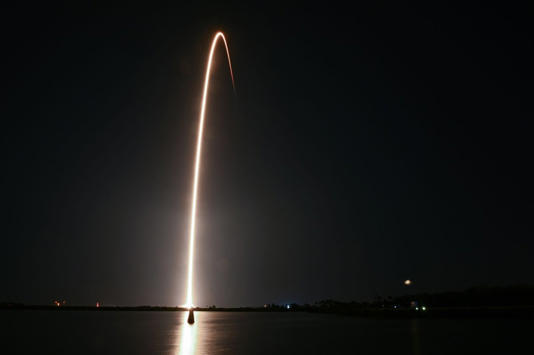SpaceX, under the visionary leadership of Elon Musk, achieved another milestone in space exploration on March 30, 2024, with the successful launch and landing of its Falcon 9 rocket, marking the 260th reflight of an orbital class rocket. This feat underscores the company’s commitment to revolutionizing space travel through the development of reusable spacecraft. In this article, we delve into the significance of SpaceX’s achievement, the technology behind reusable rockets, its impact on space exploration, and the implications for the future of humanity’s presence beyond Earth.
The Significance of SpaceX’s 260th Rocket Reflight: SpaceX’s relentless pursuit of reusability has transformed the landscape of space exploration. The 260th reflight of an orbital class rocket, exemplified by the Falcon 9, represents a paradigm shift in rocket technology. Traditionally, space missions incurred exorbitant costs due to the expendable nature of launch vehicles. However, SpaceX’s innovative approach has dramatically reduced the financial barriers associated with accessing space.
Understanding Reusable Rocket Technology: At the heart of SpaceX’s success lies the concept of reusability. Unlike traditional rockets that are discarded after a single use, the Falcon 9’s first stage is designed to return to Earth intact, enabling it to be refurbished and relaunched. This feat is made possible through precise engineering, advanced materials, and autonomous landing capabilities. Elon Musk’s vision of creating a fully reusable rocket has propelled SpaceX to the forefront of the aerospace industry.
Implications for Space Exploration: The advent of reusable rockets has far-reaching implications for the future of space exploration. By significantly lowering the cost of launching payloads into space, SpaceX has democratized access to the cosmos. This accessibility opens up new possibilities for scientific research, commercial ventures, and human exploration beyond Earth. Moreover, reusable rockets pave the way for ambitious missions to the Moon, Mars, and beyond, laying the groundwork for a sustainable presence in space.
Challenges and Future Prospects: Despite its achievements, SpaceX continues to face technical challenges and regulatory hurdles on its quest for reusability. The rigorous process of refurbishing rocket components and ensuring their safety for subsequent flights requires ongoing innovation and investment. Moreover, the scalability of reusable rocket technology remains a topic of debate within the aerospace community. Nevertheless, SpaceX remains undeterred in its pursuit of pushing the boundaries of space exploration.
SpaceX’s 260th rocket reflight represents a historic milestone in the journey towards a more accessible and sustainable space future. By demonstrating the viability of reusable rocket technology, SpaceX has reshaped the dynamics of space exploration and inspired a new generation of space enthusiasts. As we look towards the future, the continued advancement of reusable rockets promises to unlock unprecedented opportunities for humanity’s expansion into the cosmos, ultimately fulfilling the dream of becoming a multiplanetary species.
